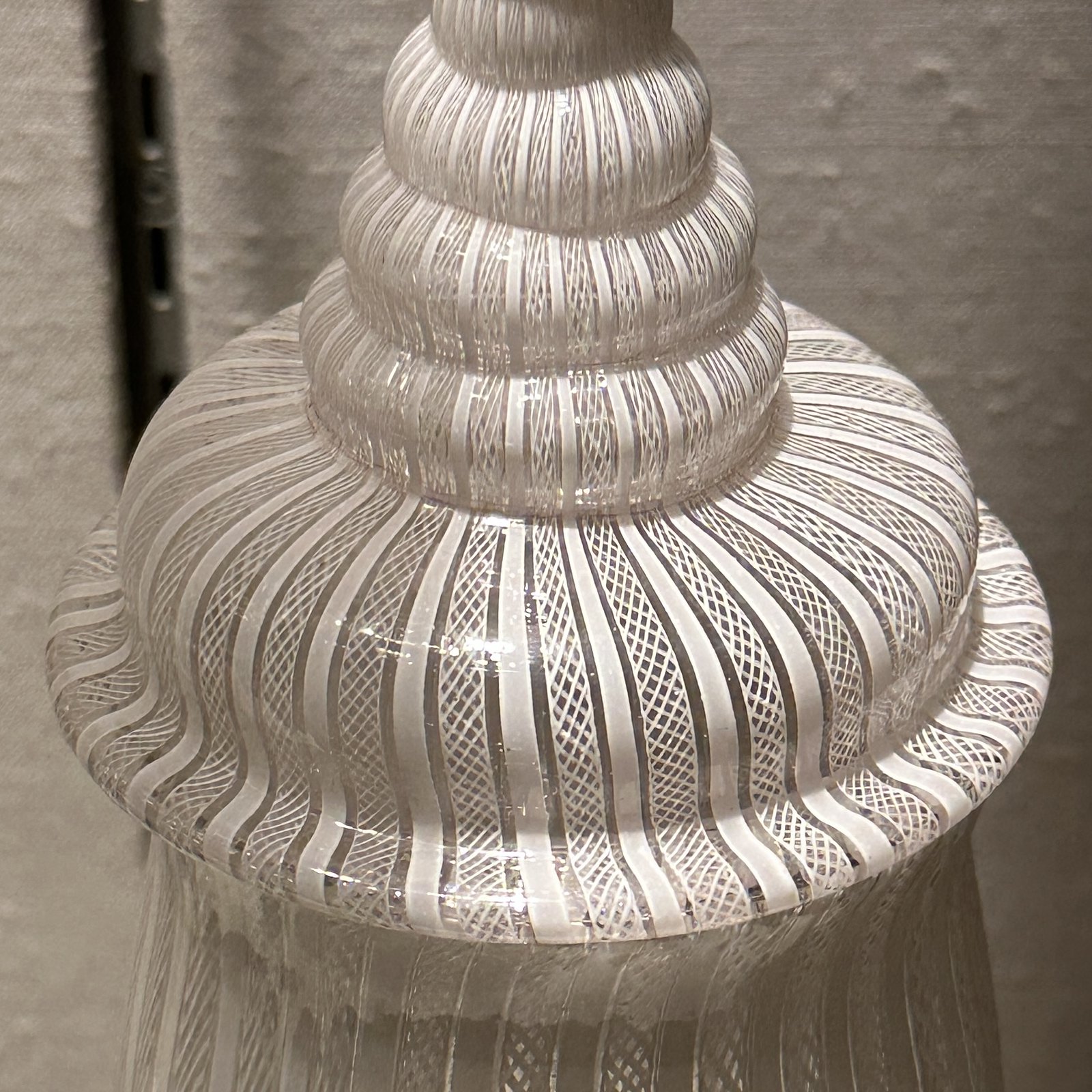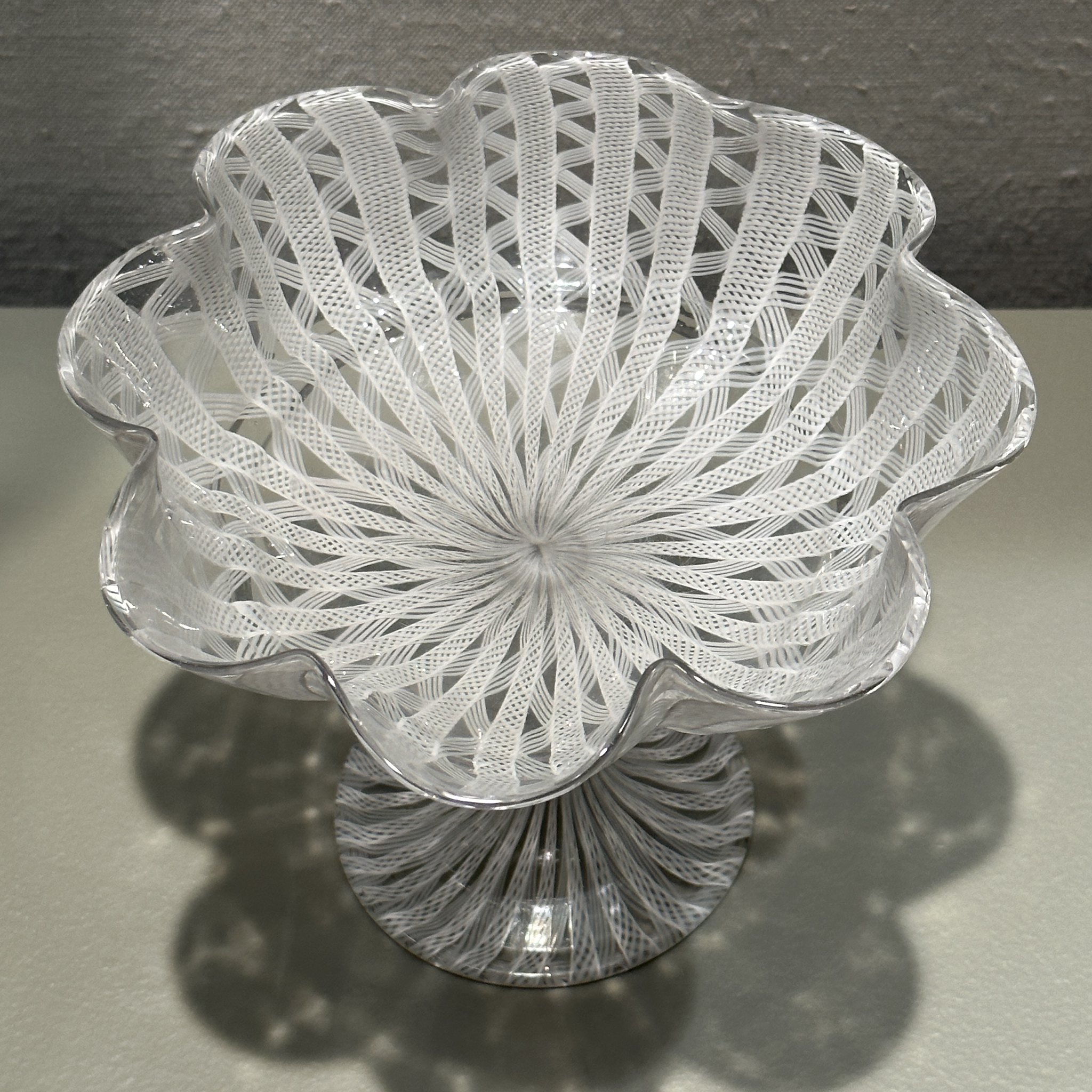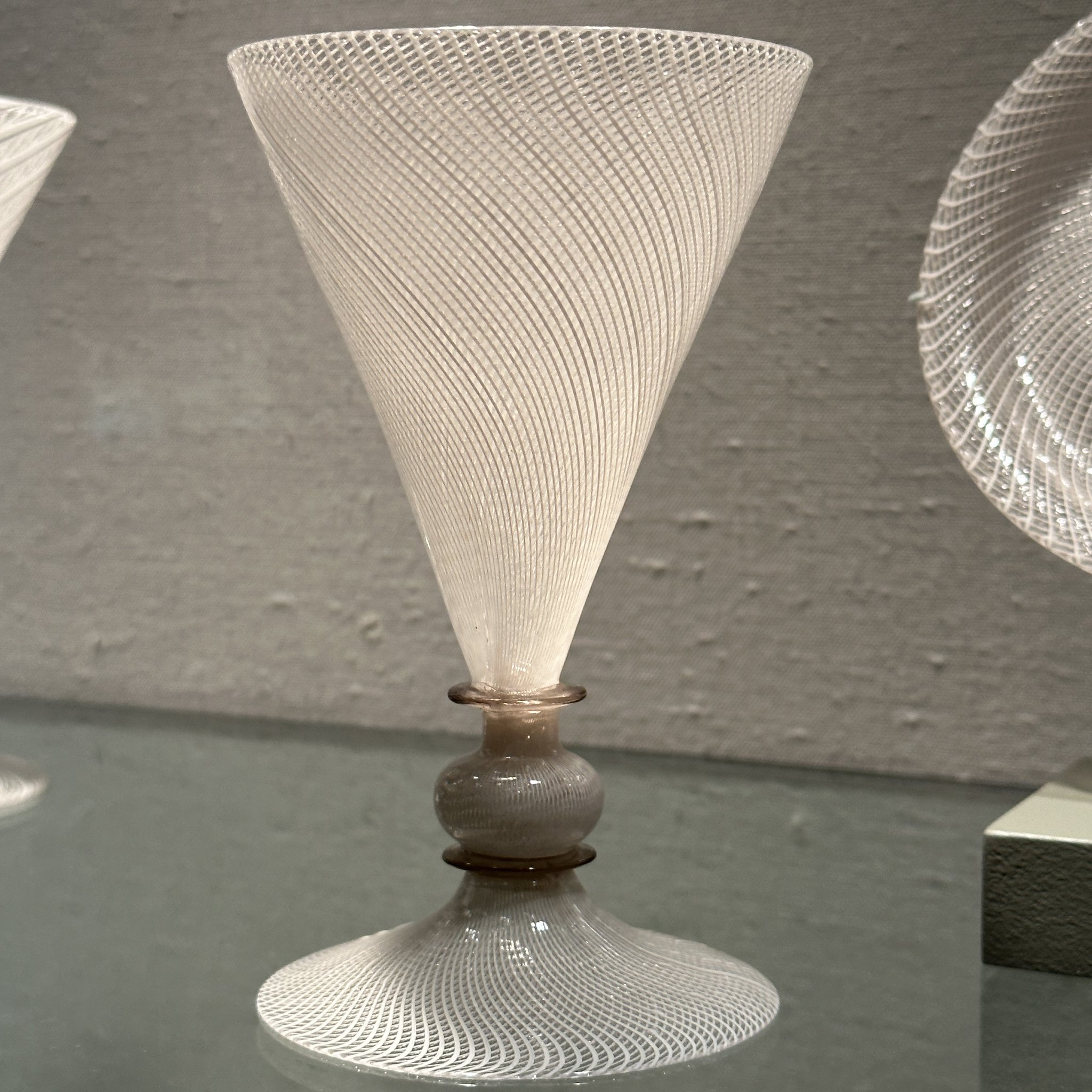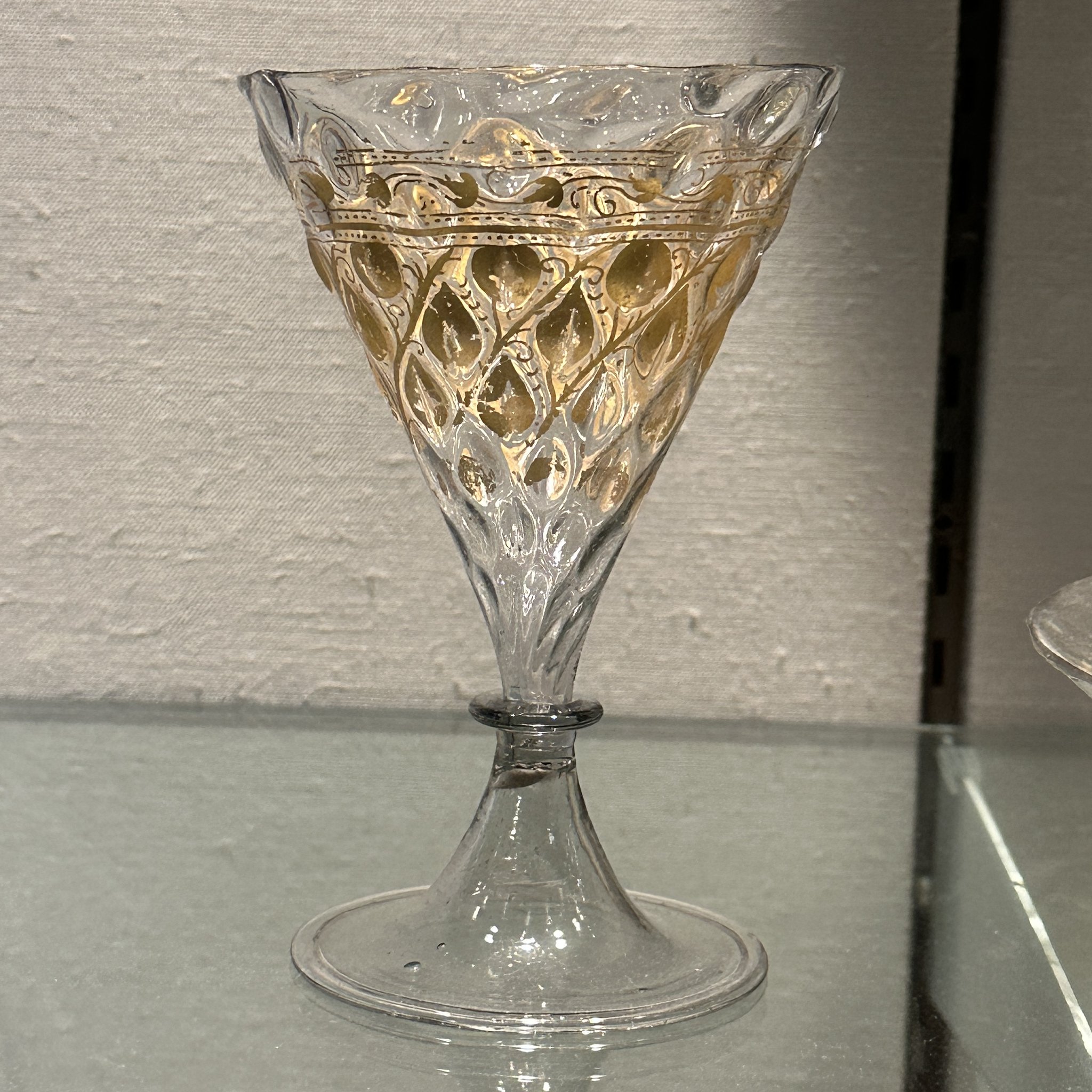
At the end of the Middle Ages, Venetian Italians were known for their superior glass work.
While much of Europe focused on window glass, glass makers from Venetian suburbs of Murano and Altare concentrated instead on producing the clearest crystals suitable for delicate vessels. They used purer sources of silica and soda. They also adapted the more refined techniques of the Mediterranean.
By the 15th century, glass-makers of northern Italy's Murano got rock star treatment--they could wear swords, were immune from state prosecution, and could even marry their daughters into prominent families.
How they produced the colorless glass, cristallo, was kept secret from the world. With this techniques, these glass makers specialized in the filigree style, by embedding white threads into white glass. No one else could even come close for a long while.
History of Glass
 Glass didn't start out as its own thing. For thousands of years before people created glass windows,
containers, or figurines, they used the substance as a strong, translucent coating for pottery.
It took a few more centuries until Egyptians learned to forge glass -- with its own unique properties -- into novel shapes.
And then their products were slowly spread through Europe by Phoenician traders.
Glass didn't start out as its own thing. For thousands of years before people created glass windows,
containers, or figurines, they used the substance as a strong, translucent coating for pottery.
It took a few more centuries until Egyptians learned to forge glass -- with its own unique properties -- into novel shapes.
And then their products were slowly spread through Europe by Phoenician traders.
The art of making glass probably grew from the field of pottery, most likely in Egypt from about 4,000 B.C., towards the end of the Neolithic era. Glass is made from heating a clean mixture of soda, lime, and sand until it melts into a liquid.
Objects made solely from glass didn't start appearing until about 1,500 B.C., the products of what we now know as glass-blowing. Romans created beautiful mosaic glasses and bowls for the emperor's table, but it was Syria that perfected the art of glass-blowing, first with molds and then freehand.
 Reheating the glass, a practiced blower
could blow and spin the molten substance into any shape. The practice quickly
spread across the Roman empire, and even to the "outer barbarians" of Afghanistan
and the northern highlands of Scotland.
Reheating the glass, a practiced blower
could blow and spin the molten substance into any shape. The practice quickly
spread across the Roman empire, and even to the "outer barbarians" of Afghanistan
and the northern highlands of Scotland.
Molding the glass to desired characteristics can be tricky. The glass had to be cooled slowly -- too quick and the gas bubbles won't escape, and crystallize in place. The three basic ingredients when mixed will produce a clear glass, but even trace elements of other minerals could change the color of the resulting product.
Much of the glass we see today comes with greenish-brown color, thanks to the iron present in much sand. Other impurities produce other tints: Copper for green-blue, silver for yellow, cobalt for blue (duh). But to make glass extra clear? Manganese dioxide, or 'glass-maker's soap.'
Red was always a problem. The Assyrians used traces of gold to make a ruby colored glow. But it was the famed Murano glass makers who cracked the code, by adding copper-oxide and heating without air.
History of Glass
 The art of glass coloration gradually evolved over the centuries, driven by people's ever-insatiable need for luxury goods.
Glass-artisans felt along
by intuition and lucky alchemy, until chemistry came along in the 17th century to explain the underpinnings.
The art of glass coloration gradually evolved over the centuries, driven by people's ever-insatiable need for luxury goods.
Glass-artisans felt along
by intuition and lucky alchemy, until chemistry came along in the 17th century to explain the underpinnings.
As their work grew more widely-known in the centuries to follow, the Italian glassworkers scattered about the globe, to far-flung locales as Sweden and England.
The art form was heading towards mass production anyway. The coal-powered glass furnace was born of necessity, when, in 1615, England banned the burning of trees for glass making,in an effort to keep timber economical. One immediate benefit? The hotter 1,000+ degree temperatures these furnaces offered. Casting was necessary to produce larger sheets of glass.
--Summarized from "A Short History of Technology: From the Earliest Times to A.D. 1900" and an exhibit at the Corning Museum of Glass. Photos are from the Corning exhibit.
